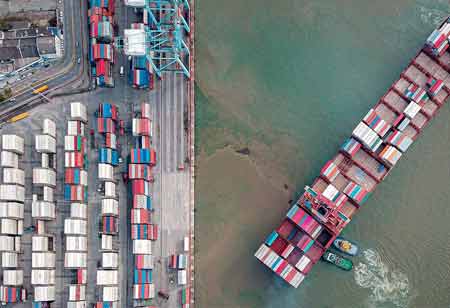THANK YOU FOR SUBSCRIBING
THANK YOU FOR SUBSCRIBING

By
Logistics Transportation Review | Monday, April 14, 2025
Stay ahead of the industry with exclusive feature stories on the top companies, expert insights and the latest news delivered straight to your inbox. Subscribe today.
In a highly competitive environment where productivity is critical, businesses voluntarily gravitate toward technological innovations to streamline their processes.
Fremont, CA: Artificial intelligence (AI) is transforming how companies manage and operate their fleets of cars, demonstrating the trend toward automation in the fleet management industry.
Fleet management is changing due to the introduction of AI-led technologies like centralized telematics, quick alert systems, remote mentorship, enhanced security measures, and geo-fencing capabilities. These developments make it possible to provide fleet services with unmatched efficiency, quality, and speed. The primary goals of automating fleet management are to increase resource efficiency, decrease operating costs, increase safety, and capitalize on the demands placed on fleet managers.
Fleet Automation's Fundamentals
Fundamentally, fleet automation controls the use of technology to keep an eye on a group of automobiles, typically owned by companies or organizations. This procedure entails using hardware and software solutions created to manage fleets seamlessly, reduce inefficiencies, and raise productivity levels. By using these solutions, fleet managers may access their cars in real-time, which promotes efficient routing, prompt dispatch, and compliance with legal and regulatory requirements.
Benefits of Automation in Fleet Management
There are several advantages to switching to automated fleet management systems, such as improved fleet safety and compliance, smoother operations, faster driver and vehicle performance, and higher vehicle utilization. This technological advancement offers organizations increased cost savings through enhanced vehicle monitoring and maintenance procedures. It gives them access to the intelligence and analytics needed to guide long-term, profitable operations.
Fleet Automation Implementation: A Strategic Approach
Before integrating fleet automation, businesses should investigate potential solutions and vendors to choose the system that best suits their fleet size and operational objectives. This involves picking systems that efficiently arrange and monitor important data. After choosing an appropriate system, the following stages are establishing and implementing a strategy involving staff training, installing required hardware and software, and incorporating new operational practices.
The fleet management industry is about to undergo a significant shift because companies worldwide implement these cutting-edge solutions, guaranteeing increased productivity, safety, and efficiency in the future.
I agree We use cookies on this website to enhance your user experience. By clicking any link on this page you are giving your consent for us to set cookies. More info





